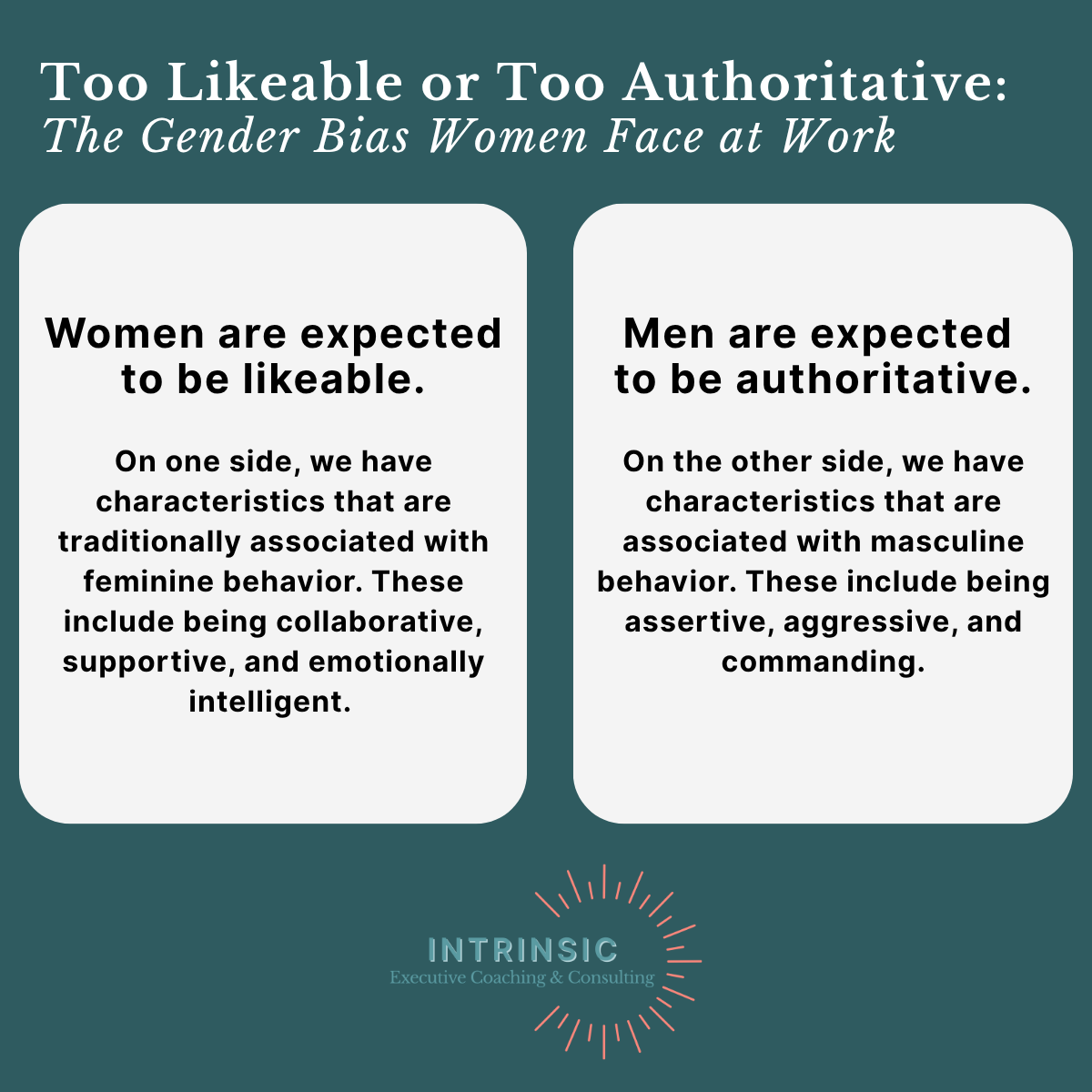From “Too Much” to “Not Enough”: The Gender Bias Women Face at Work
Have you ever been told that you need to soften your edge? That you’re just too much? Or conversely, that you’re a solid member of team, but not really seen as assertive enough to lead?
In both cases, you were walking the tightrope and may not have even known it. Don’t worry, you’re not alone.
One study found that 73% of women reported experiencing problems with navigating the tight rope bias.
I’m not talking about the circus act, I’m talking about the tight rope that professional women must walk every day in work environments where our behaviors are judged based on gender biases.
On one side, we have characteristics that are traditionally associated with feminine behavior. These include being collaborative, supportive, and emotionally intelligent. Women are expected to be likeable.
On the other side, we have characteristics that are associated with masculine behavior. These include being assertive, aggressive, and commanding. Men are expected to be authoritative.
In order to be seen as a leader, women need to lean into masculine behaviors and show that we can be authoritative. We have to prove that we can assert ourselves, command a room, and influence others. However, in order to be successful, we also have to exhibit feminine traits like being supportive, emotionally intelligent, and acting as a team player. We have to be well-liked.
Lean too far into traditionally masculine behaviors, and you’re a bitch. Lean too far into feminine behaviors and you’re nice, but not leadership material.
Throughout my career, I have wobbled on this tight rope and leaned too far one way or the other.
For example, three months into an early career promotion, I was told that my clients didn’t like or trust me because I was too stoic. I was clearly not leaning far enough into feminine behaviors. So I learned to spend more time getting to know my clients on a personal level and sharing more about myself. I asked after their families and told funny stories about my toddler son. Eventually, I gained their trust and learned that in order to be successful, I had to be competent, but I also had to be likeable.
I’ve also had to lean harder into masculine behaviors at some points in my career. I realized that if I wanted to continue to progress, I was going to have to present myself as authoritative and worthy of leadership roles.
One skill that proved critical to my success was challenging others when they acted in a way that was disrespectful or undermining. During one corporate presentation, a male colleague leaned over to my boss and cracked a joke. I couldn’t hear what he said, but he did the wink/elbow nudge gesture and they both laughed. In that moment, I felt totally deflated. His behavior undercut my presentation and my proposal. The next morning, I was in this colleague’s office bright and early to talk with him. I told him that his behavior was rude and unacceptable. I didn’t want to ever see that from him again. And I never did.
Through trial and error, I’ve continued to try to stay upright on this tightrope. I’ve carefully navigated the opposing expectations placed on me as a woman leader, leaning this way and then that way. The key is to be comfortable flexing to both masculine and feminine traits, and understanding what that balance authentically looks like for you. I can comfortably act as a collaborator or an aggressor, a team player or a bitch.
The more we understand about gender bias, the easier it is to manage. I’ve gained so much by talking with other women and hearing about their experiences and strategies. Here are some actions that have worked for me.
Learn more about it. There are excellent resources out there. I like “What Works for Women at Work” by Joan Williams and Rachel Dempsey.
Form allies or convert a challenger into an ally. If someone is undercutting you, call it out, find common ground and propose mutual respect.
Try flexing your style depending on the situation. Lead with more authority or collaboration as needed. Find what works and still feels authentic to you.
All leaders need help navigating this, regardless of gender. When you see the tight rope bias at play for others, it’s important to address it. When you’re experiencing it directly, a coach can help you navigate the strategies for overcoming it. For more on this, let’s have a discussion.
Please contact me directly here:
Loala McCann is an Executive Coach who specializes in working with women in leadership. Her clients often come to her when they’re stressed out and losing sleep over a major transition: an intimidating set of new responsibilities, a new team with tough dynamics, challenging company growth, looming retirement and more.
Coaching is an excellent resource for individual leaders to regain their footing during a challenging period. It’s also the best option for a team in need of recalibration.
For more on Loala’s coaching philosophy, the story of how she transitioned from corporate HR executive to coach, and why she does what she does, click here.


